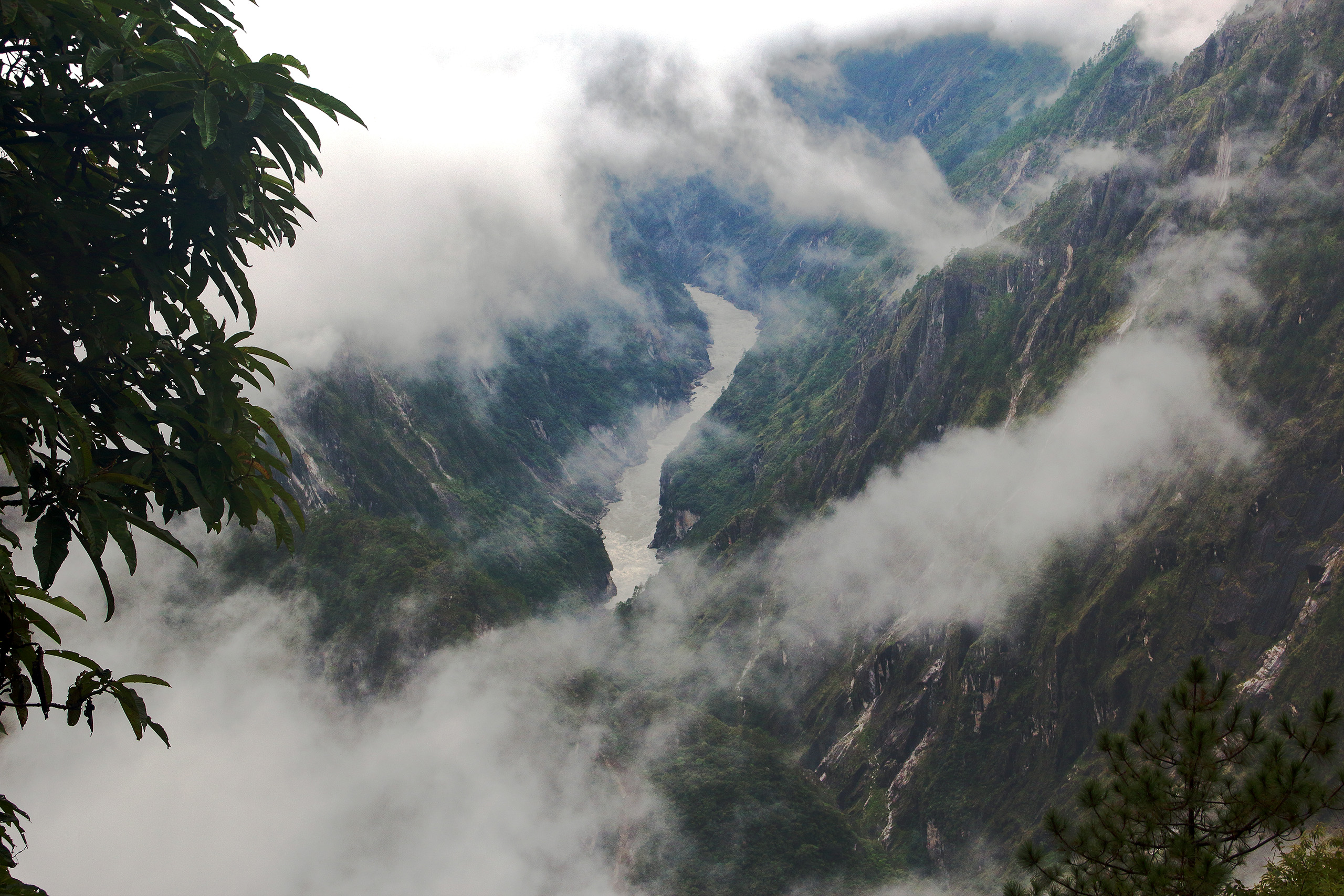Should this be China’s next big national park?
The Yarlung Tsangpo canyon and its surroundings are homes to China’s largest expanse of primary forest. The rivers and deep gorges here house isolated populations of plants and animals that have evolved into new species and subspecies – many of which are as yet unknown to science. The valley’s steep V-shaped sides funnel warm moist air from the Indian Ocean north to the plateau, creating a habitat suitable for a broad range of plants and animals.
The Yarlung Tsangpo River flows through the valley, and flows on to become the Brahmaputra River when it enters India. Where the majority of the 500-kilometre canyon is located, was for many years little-known to outsiders, being the last county in China to be connected to the road system in late 2013.

Researchers have found that despite only 40km separating the waters of the Yarlung Tsangpo in southern Mêdog and the peak of Namcha Barwa, the range of altitude spanning 7.28km means all kinds of vegetation can exist in the area: from tropical monsoon forest to evergreen broadleaf forest, to mixed conifer-and-broadleaf forests, wholly coniferous forests and alpine scrub.
Scientists have found many rare and endangered species surviving there – including the Bengal tiger. Other large cats have also been confirmed – tigers, leopards, snow leopards and clouded leopards coexist in the area and maintain stable populations. This, scientists explain, is not seen anywhere else in the world.
The area is also home to Asia’s biggest concentration of ungulates (mammals with hooves) – scientists have identified nine places in Asia where 10 or more ungulates can be found. The lower reaches of the Yarlung Tsangpo are home to 15 species (16 if the Bhutan takin is considered a separate species) – more than anywhere else in Asia.
Rare primates are also present, including the white-cheeked macaque, a species which has been confirmed as a species new to science. The Tibetan cypress, a coniferous tree, is unique to Tibet, is found along the lower reaches of the river. The majority of individual trees are over a century old, with some over a thousand years old.
Besides its biodiversity, the topography of Yarlung Tsangpo canyon is also spectacular. Considered by some to be the world’s deepest gorge, it starts at the village of Daduka at an altitude of 3,000m and runs east, winding around the Namcha Barwa mountain. The river then flows through Mêdog and south into India as the Brahmaputra. The canyon is 505km long and up to 6km deep, with an average depth of 2.3km.
At its lower end, the canyon is flanked by rainforest. Sky-tickling trees are covered with dazzling orchids and vines, while rufous-necked hornbills swoop in the canopy. On the ground, tropical plants grow, some of their leaves the size of umbrellas. But heading in the opposite direction, to the north, the appearance of the canyon changes until, at an altitude of about 5,000m, there is only snow and ice.
Three nature reserves already exist in the area – Kongpo, Cibagou and the Yarlung Tsangpo Grand Canyon – but these are unconnected. Now, Chinese scientists and conservationists are calling for it to be made a national park.
One of those calling for a new, contiguous national park is Lü Zhi, a professor at Peking University’s School of Life Sciences, who suggests the new park should combine the three reserves and small nearby wetland parks. This would have a total area of about 40,000km2 (adding more than 10,000km2 to the existing protected areas).
Early this year, the National Forestry and Grassland Administration, which manages China’s national parks, solicited public opinion online on which areas should be included in the next batch of national park trials, but the Yarlung Tsangpo canyon got some of the fewest votes of all 66 options – in part as it has had such little accessibility.
Hydropower development on the lower reaches of the Yarlung Tsangpo River is being considered, having been included in both the national 14th FYP and the FYP for Tibet. The proposed hydropower stations if built, would be in one of China’s most biodiverse regions.
“For China, Mêdog is irreplaceable,” said Wang Fang, a researcher with Fudan University’s School of Life Sciences. Its isolation has protected it, Wang says, adding that “when there was no road, nobody thought anything would change. But now there’s a sense of urgency – the road makes major engineering projects more feasible, and we could lose things.”
“Protection of flagship species such as the Bengal tiger, clouded leopard, rufous-necked hornbill and Tibetan cypress will spur overall protection of biodiversity in the region,” said Professor Lü Zhi.
SOURCE: Extract from China Dialogue, October 13, 2021.
https://chinadialogue.net/en/nature/yarlung-tsangpo-canyon-chinas-next-national-park/